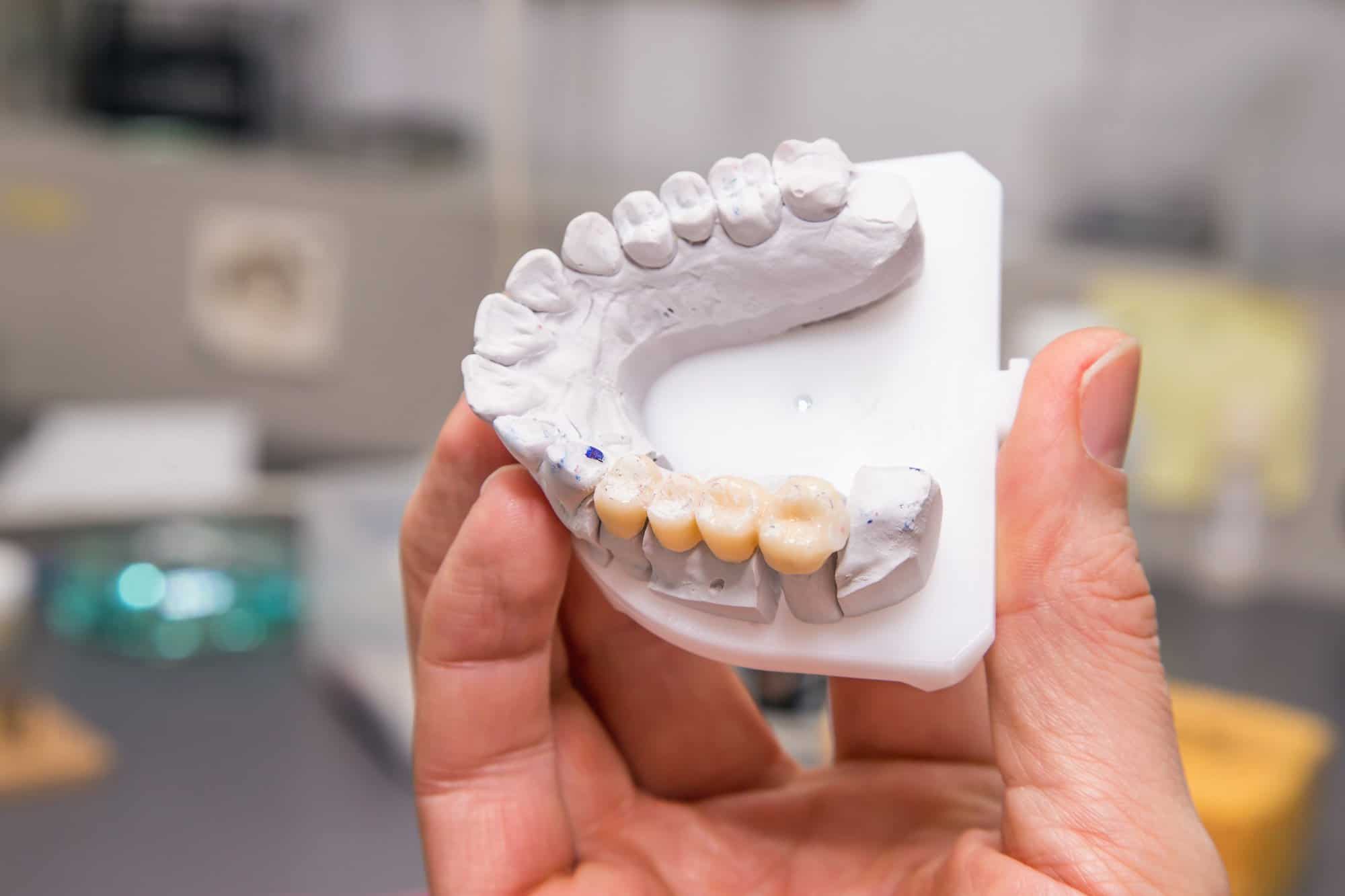One of the more common ways dentists use to compensate for a lost tooth is to place a dental bridge that covers the gap. As the name implies, a dental bridge “bridges” a space where one or more teeth are missing to restore a healthier smile. Placing a bridge is an alternative to getting a dental implant, a process that takes more time and is more costly.
A bridge can be an asset and improve how you chew and speak, but there’s more than one type of bridge. If you’re considering a dental bridge, you might like to know about the types available. Let’s look at the three main types of dental bridges and how they differ. Ultimately, the best option depends on where the missing teeth are in your mouth and the cost. These are issues to discuss with your dentist, so you can make the best decision for the health of your smile.
Standard Dental Bridge
A standard dental bridge, also known as a fixed dental bridge, is a structure with a false tooth in the middle, supported by a tooth on each side. The false tooth fills the gap where a tooth is missing. This type of implant works best when there are two natural teeth on either side of the gap. To prepare the natural teeth to accept the bridge, the dentist removes some enamel from the teeth on each side to prepare them for crowns. The crowns serve as abutments that anchor the bridge containing the false tooth in place. Standard dental bridges are made of ceramic or porcelain bonded to metal.
Maryland Bonded Bridge
This type of bridge doesn’t require a tooth to be crowned. Instead, the dentist places a frame of metal or porcelain on the teeth on either side of the missing tooth or teeth. The frame consists of two parts: a pontic, which replaces the missing tooth, and the abutment, which attaches to the teeth on either side of the missing tooth.
To anchor the bridge, the dentist uses a special resin. The advantage of this method is you don’t have to crown the teeth that the bridge attaches to, so it doesn’t damage healthy teeth. It’s also a less time-consuming and costly approach to bridging a gap when you compare it to a standard bridge.
Although cheaper, there are some drawbacks to getting a Maryland bonded bridge. The false tooth of a Maryland Bonded bridge lacks the translucency that a natural tooth does, so it’s not as aesthetically pleasing as a standard dental bridge.
Over time, a Maryland Bonded bridge can also loosen from constant chewing and require re-bonding. Since you apply the bonding agent directly to the tooth, it can damage the tooth. Dentists are more likely to recommend a Maryland bonded bridge for missing teeth in the front of the mouth, rather than the back.
Cantilever Dental Bridge
The Cantilever dental bridge has fallen out of favor in the past few decades. It’s a type of bridge a dentist can place when there are teeth on one side of the missing tooth, but not the other. The tooth that will hold the bridge must be crowned before placing the bridge. Since only one side of a cantilever bridge is supported by one tooth, the risk of cracking the bridge is higher. The lack of support on both sides also increases the likelihood of the bridge coming off when chewing.
Some advantages of a cantilever bridge are the lower cost and the fact it preserves more teeth. With a cantilever dental bridge, you only have to crown one tooth, so you preserve more natural tooth structure. The cost is also less than a standard dental, fixed dental bridge.
Talk to Your Dentist
Your dentist can tell you what type of bridge is right for you. Dental bridges, depending upon the type, can last up to 15 years with proper care before you’ll need to replace it. Bridging missing teeth can improve how you chew, the appearance of your smile, and how you speak. Plus, you can get over a decade of use out of a single bridge if you care for it properly. It’s a small investment to make for your smile and your health.



